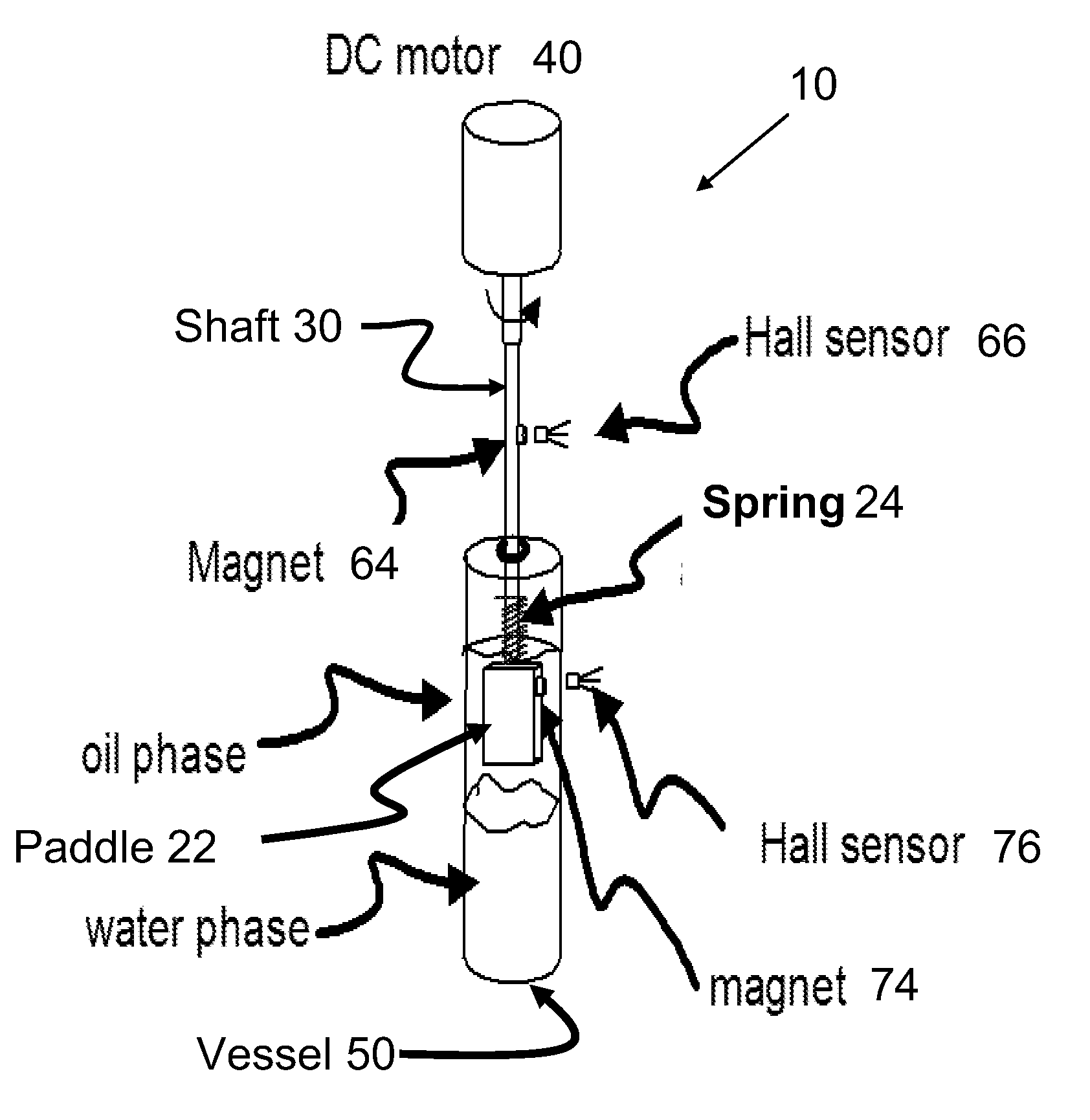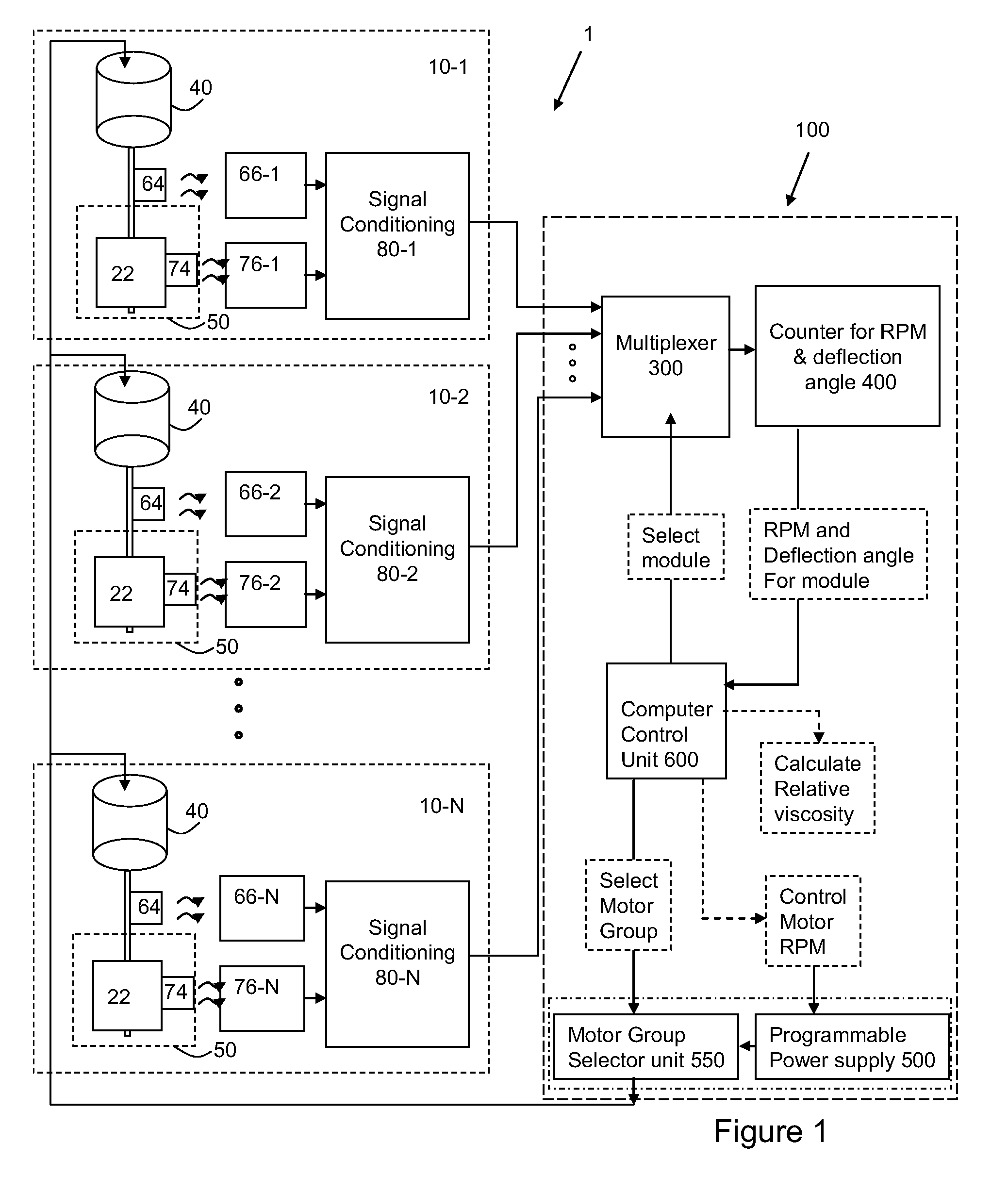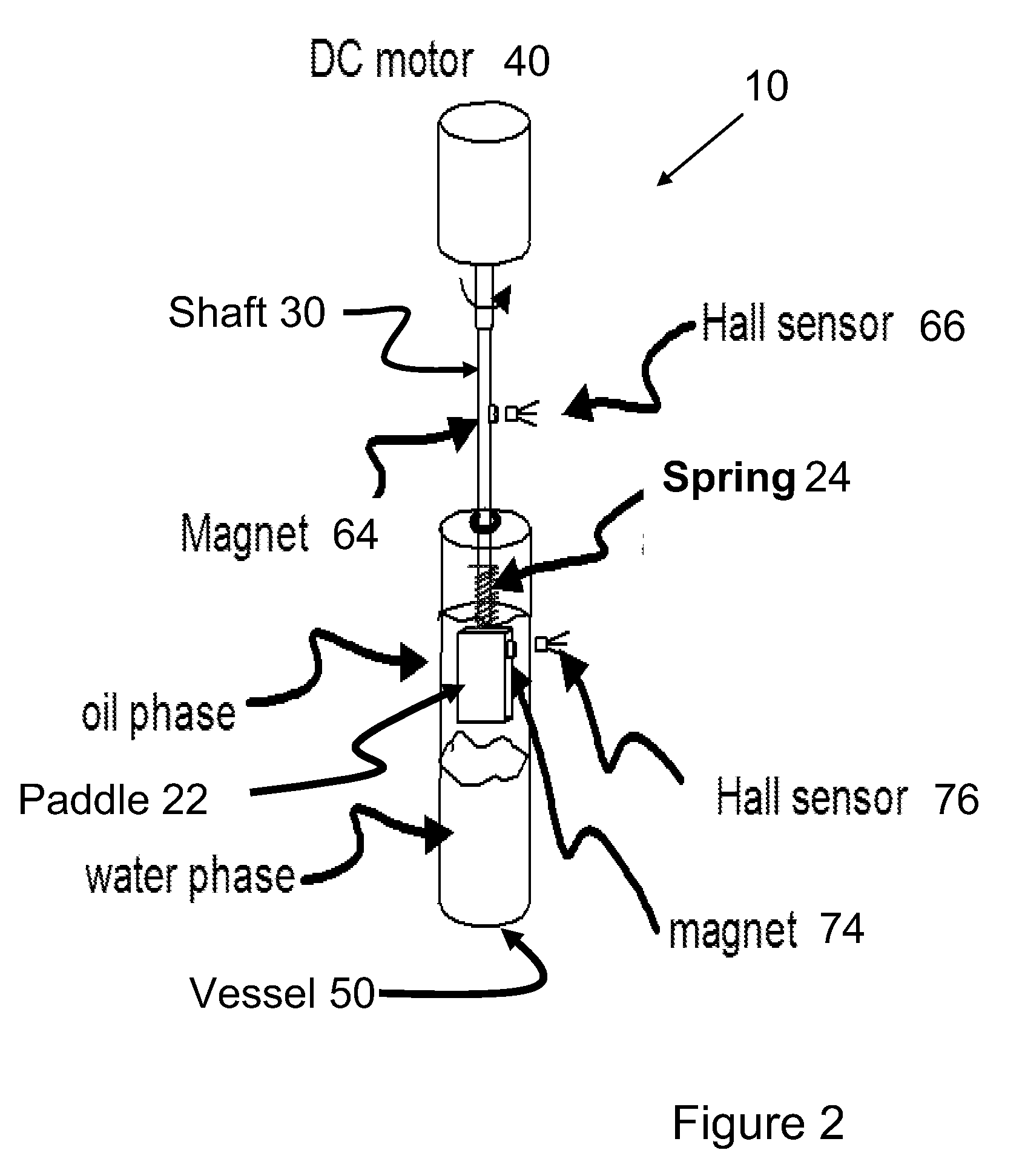Apparatus for measurement of in-situ viscosity
a technology of viscosity and apparatus, which is applied in the direction of measurement devices, instruments, scientific instruments, etc., can solve the problems of reduced liquid volume, difficult to adapt to sealed vessels such as those used for enrichment cultures, and difficulty in adapting the type of viscometer to a sealed vessel
- Summary
- Abstract
- Description
- Claims
- Application Information
AI Technical Summary
Benefits of technology
Problems solved by technology
Method used
Image
Examples
example 1
[0051]The apparatus and measurement method described above was used on a series of calibration fluids. These fluids were purchased from Brookfield viscosity standards available from Brookfield Engineering Laboratories, Inc, Middleboro, Mass., USA at the following viscosities: 1000 centipoise (cp), 300 cp, 100 cp, 75 cp, 56 cp and 1 cp. For a viscosity of zero, air was used. A fluid volume of 40 ml was placed in each vessel 50-1 through 50-6. The deflection angle of the paddle was measured for each fluid at three different shaft rotational speeds: 399, 225 and 166 revolutions per minute (RPM). The top plot of FIG. 7 shows these deflection angles plotted as a family of curves at each RPM. For example, for the 1000 cp fluid and at shaft speed of 399 RPM, the deflection angle of the paddle was just under 100 degrees from its equilibrium position. At 225 RPM, the paddle had a deflection angle of 58 degrees and at 166 RPM, the deflection angle was 43 degrees. The deflection angle was line...
example 2
[0052]For this example, 40 ml of crude oil was placed in one vessel 50-1 of the apparatus. Approximately 14 ml of crude oil and 26 ml of water were placed in a second vessel 50-2. The relative viscosity of the oil phase of each vessel was measured at predetermined intervals for a full week. The relative viscosity was the relative change in the deflection angle of the paddle at a constant shaft speed. As shown in the plot of FIG. 8, there was essentially no change in the viscosity of the oil when either in contact with the water or not in contact with the water.
example 3
[0053]For this example, 14 ml of crude oil and 26 ml of water were placed in one vessel 50-1 of the apparatus. The same 14 ml of crude oil and 26 ml of water were placed in a second vessel 50-2. In this second vessel, 5 milliliters (ml) of an ATCC strain 33635, (Marinobacterium georgiense) at about 108 colony forming units per milliliter (cfu / ml) was used as an inoculum. The relative viscosity was measured each day as the relative change in the deflection angle at a constant RPM for a over a month. As shown in the plot of FIG. 9, there was a consistent increase in the viscosity of the oil for both the control as well as the inoculated well. This increase in viscosity was subsequently found to be due to evaporative loss of a small part of the oil since the head space in the vessel was vented into the nitrogen atmosphere chamber.
PUM
| Property | Measurement | Unit |
|---|---|---|
| volumes | aaaaa | aaaaa |
| length | aaaaa | aaaaa |
| diameter | aaaaa | aaaaa |
Abstract
Description
Claims
Application Information
 Login to View More
Login to View More - R&D
- Intellectual Property
- Life Sciences
- Materials
- Tech Scout
- Unparalleled Data Quality
- Higher Quality Content
- 60% Fewer Hallucinations
Browse by: Latest US Patents, China's latest patents, Technical Efficacy Thesaurus, Application Domain, Technology Topic, Popular Technical Reports.
© 2025 PatSnap. All rights reserved.Legal|Privacy policy|Modern Slavery Act Transparency Statement|Sitemap|About US| Contact US: help@patsnap.com



